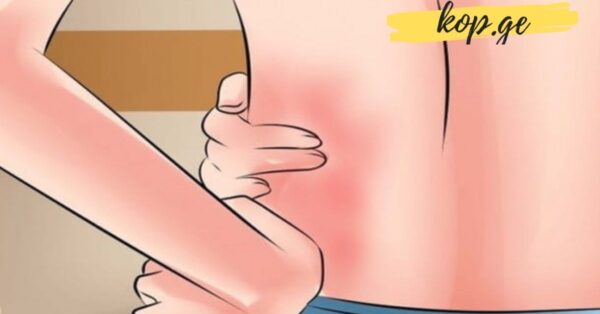This Vitamin Deficiency Can Cause Back and Joint Pain – Essential Information You Need!

Many people assume that back and joint pain are simply an unavoidable part of the aging process. For some, stiffness and discomfort begin the moment they wake up in the morning and can persist throughout the day. While it’s true that age, posture, and lifestyle play major roles, pain in the spine and joints can sometimes be linked to something surprisingly simple: a vitamin deficiency.
Recent research has shown a strong connection between joint pain and vitamin D deficiency. This vital nutrient plays a key role in bone health, muscle function, and the immune system. Without enough of it, bones become weaker, muscles may ache, and the risk of conditions like arthritis or osteoporosis increases significantly.
Why Vitamin D Matters
Vitamin D is sometimes called the “sunshine vitamin” because our bodies can produce it naturally when our skin is exposed to sunlight. Unlike other vitamins, which we mainly obtain from food, vitamin D synthesis heavily depends on sun exposure. Unfortunately, modern lifestyles often limit the amount of time we spend outdoors, leading to widespread deficiency worldwide.
When the body lacks vitamin D, calcium absorption decreases, which weakens bones and joints. Over time, this deficiency can cause chronic discomfort, reduced mobility, and a higher risk of fractures. That’s why paying attention to your vitamin D levels is essential for long-term health.
Common Symptoms of Vitamin D Deficiency
Not everyone with a vitamin D deficiency experiences obvious symptoms, but some common signs to look out for include:
A burning sensation in the legs or feet – This can be a subtle early sign that the nerves and muscles are under strain due to weakened bone support.
Poor or restless sleep – Vitamin D plays a role in regulating mood and sleep quality. People with deficiencies often struggle with insomnia or non-restorative sleep.
Leg pain and muscle weakness – Aching muscles, cramps, or general fatigue in the legs may indicate insufficient vitamin D.
If these symptoms persist, especially in combination, it may be worth asking your doctor to test your vitamin D levels.
How to Correct a Deficiency
1. Sun Exposure – The Natural Source
The simplest and most natural way to boost vitamin D is through sunlight. Spending just 10 to 15 minutes in direct sunlight each day can help your body produce the recommended daily amount. The exact time depends on your skin type, geographic location, and season, but even brief exposure can make a difference.
However, it’s important to balance sun exposure with skin protection. Prolonged unprotected sunbathing increases the risk of skin damage and cancer. Moderate exposure is the key.
2. Food Sources of Vitamin D
While the sun is the best natural source, you can also get vitamin D from certain foods. Incorporating these into your diet can help ensure you meet your daily needs:
Fatty fish such as salmon, tuna, and mackerel
Mushrooms (particularly those exposed to sunlight or UV light)
Egg yolks
Fortified foods like milk, orange juice, or breakfast cereals
Adding these nutrient-rich foods to your meals not only supports vitamin D intake but also provides other essential vitamins and minerals for overall health.
3. Supplements
For individuals who cannot get enough vitamin D from sunlight or diet—such as those living in colder climates, people with darker skin tones, or those who spend little time outdoors—supplements can be an effective solution.
Experts recommend choosing supplements that contain vitamin D3 (cholecalciferol) rather than D2 (ergocalciferol). Vitamin D3 is the form naturally produced by the body and is generally more effective at raising and maintaining blood vitamin D levels.
Before starting supplements, it’s best to consult a healthcare professional. Over-supplementation can lead to side effects, such as high calcium levels, which may harm the kidneys.
The Broader Benefits of Vitamin D
Correcting a vitamin D deficiency does more than relieve joint and back pain. Adequate levels of this nutrient are associated with:
Stronger bones and teeth – Vitamin D helps regulate calcium and phosphorus absorption.
Improved immune function – It plays a role in defending against infections and may even help reduce the risk of autoimmune conditions.
Better mood and mental health – Low vitamin D has been linked to depression and seasonal affective disorder (SAD).
Reduced risk of chronic diseases – Studies suggest that sufficient vitamin D may lower the risk of cardiovascular disease, type 2 diabetes, and certain cancers.
Practical Lifestyle Advice
At kop.ge, we focus on providing natural and practical health tips that can be applied at home. The goal is to make wellness accessible, affordable, and enjoyable for everyone. You don’t necessarily need expensive treatments or complicated procedures to improve your health. With small daily habits—like mindful nutrition, gentle self-care, and simple remedies—you can make a big difference.
Many of the suggestions shared here are not only beneficial but also budget-friendly. For example, sunlight is free, and many vitamin D–rich foods are common and affordable. This means that almost anyone can take steps to improve their vitamin D status without financial burden.
A Note of Caution
While home remedies and natural strategies are often helpful, it’s always wise to consult with a doctor before starting any new supplement or treatment. Every individual’s body is different, and what works for one person may not be suitable for another. Professional medical advice ensures that you are making safe and effective choices for your health.
Final Thoughts
Back and joint pain should not always be dismissed as a natural consequence of aging. In many cases, such discomfort could be a warning sign of vitamin D deficiency. Recognizing the symptoms—such as restless sleep, leg pain, and burning sensations—can help you take action before the problem worsens.
Spending a few minutes in the sun, incorporating vitamin D–rich foods into your diet, and considering supplements if necessary can greatly improve your well-being. Beyond reducing pain, maintaining healthy vitamin D levels supports strong bones, a resilient immune system, and overall vitality.
Remember: health is not only about expensive treatments or advanced procedures—it’s about simple, consistent habits. With the right information and a proactive approach, you can protect your body, improve your quality of life, and enjoy each day with more energy and less pain.












